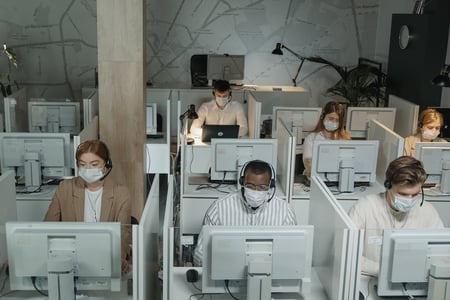Why CRM Is Flavor of the Month in Multifamily Technology
by Dom Beveridge | Mar 25, 2021 12:00:00 AM
 Over the last few years, multifamily CRM (the systems that management companies use to track leads through the leasing process) has been changing. Over the last three years, as we have researched our 20 for '20 white paper (based on 20 interviews each year with 20 senior executives), we have observed a changing landscape.
Over the last few years, multifamily CRM (the systems that management companies use to track leads through the leasing process) has been changing. Over the last three years, as we have researched our 20 for '20 white paper (based on 20 interviews each year with 20 senior executives), we have observed a changing landscape.
Two years ago, we noted the emergence of multiple mature best-of-breed CRM solutions and the attention that the industry was paying to them. Last year we observed that CRM was emerging as a management priority, with numerous operators evaluating new solutions. This year, our question about the impact of COVID on CRM initiatives split respondents down the middle.
The half of respondents whose 2020 activities remained unchanged by the pandemic felt that their existing capabilities were strong enough or that leasing remained at a level that did not require further action. However, several of these companies shared that they had more ambitious plans for 2021, with a strong focus on improving lead follow-up capabilities.
Who is leading the change?
The ten companies whose CRM activities accelerated in 2020 provide a strong indication that the market for CRM is changing. Large, mature multifamily organizations with long histories of using the CRM applications provided by their PMS provider were actively evaluating new systems or planning and, in some cases, completing cutover to them.
The companies that experienced an acceleration in 2020 CRM activities did so for a variety of reasons. The most intriguing accounts came from several large owner-operator platforms whose 2020 initiatives were in service of a more radical change agenda. Moving off a legacy CRM platform is a big decision for a large operator, so the perceived upside must be considerable. The integration of AI is a driver for several projects, but the ultimate objective is usually greater, for example, leveraging all of the technology to centralize leasing operations.
Leasing is changing
The appeal of centralization is instructive in considering how some of the larger, more sophisticated operating platforms view the future of leasing. The efficiency gains of pooling leasing resources between multiple properties are obvious and, of course, attractive. But for several operators, a rethinking of lead follow-up and tracking is motivated by a desire to focus the activities of property staff by taking repetitive work off their plates.
For operators with high density in some markets and submarkets, there are further potential benefits, as leads presenting at one community can be pushed to another if they represent a better fit for their requirements. To manage leads at a higher level than community by community (which is the way that most CRMs work), operators need technology whose database puts the prospect at the top of the hierarchy rather than the community. This data requirement narrows the number of potential vendors who can satisfy the changing needs of more sophisticated operators and will likely define this industry space for the foreseeable future.
The progress towards self-serve leasing
The progress in 2020 toward self-serve leasing was a major theme in our most recent set of interviews. The pandemic forced some to accelerate down a path to which they were already committed. It forced others to take the plunge into a process that they had previously resisted. Everybody got some level of experience in breaking the leasing paradigm, with each organization learning different lessons from that experience.
Leasing teams had to adapt rapidly to new processes, and leasing performance remained solid. For 2021, rather than thinking about what app to roll out, operators and technologists now seem more inclined to imagine a new process that incorporates the best of the 2020 learnings. Several interviewees spoke of their plans to accelerate toward a self-serve environment, emphasizing the prospect or customer journey. That represents a shift in emphasis away from implementing point solutions and toward a vision of a complete leasing process that encompasses all communication touchpoints.
By thinking of the prospect journey in this way, operators and technologists can make the right decisions on which parts of the process can and should be technology-enabled. It is not hard to imagine how this mindset results in radical technology decisions. Already large companies have begun to migrate to new CRM platforms, usually because legacy technologies are incompatible with the needs of an evolving route to market.
For example, as companies engineer sales organizations to maximize sales effectiveness by optimizing the blend of technology and human interaction, it may make sense to centralize some leasing functions. Owner-operators with high market density are prime candidates for a more centralized model. Centralization provides the opportunity to manage demand at a market level, providing additional options and a better experience to prospects. It also changes the requirements for CRM, as a prospect-centric data structure becomes necessary.
Of course, centralized leasing is not for every operator. Still, it provides a good example of the extent to which companies are rethinking one of their most important processes. The re-imagining of customer journeys as a precursor to technology decisions may turn out to be one of the biggest changes in thinking brought about by the pandemic. And the future of leasing will continue to be a topic to which we will return frequently in these pages!
Photo by Tima Miroshnichenko from Pexels